






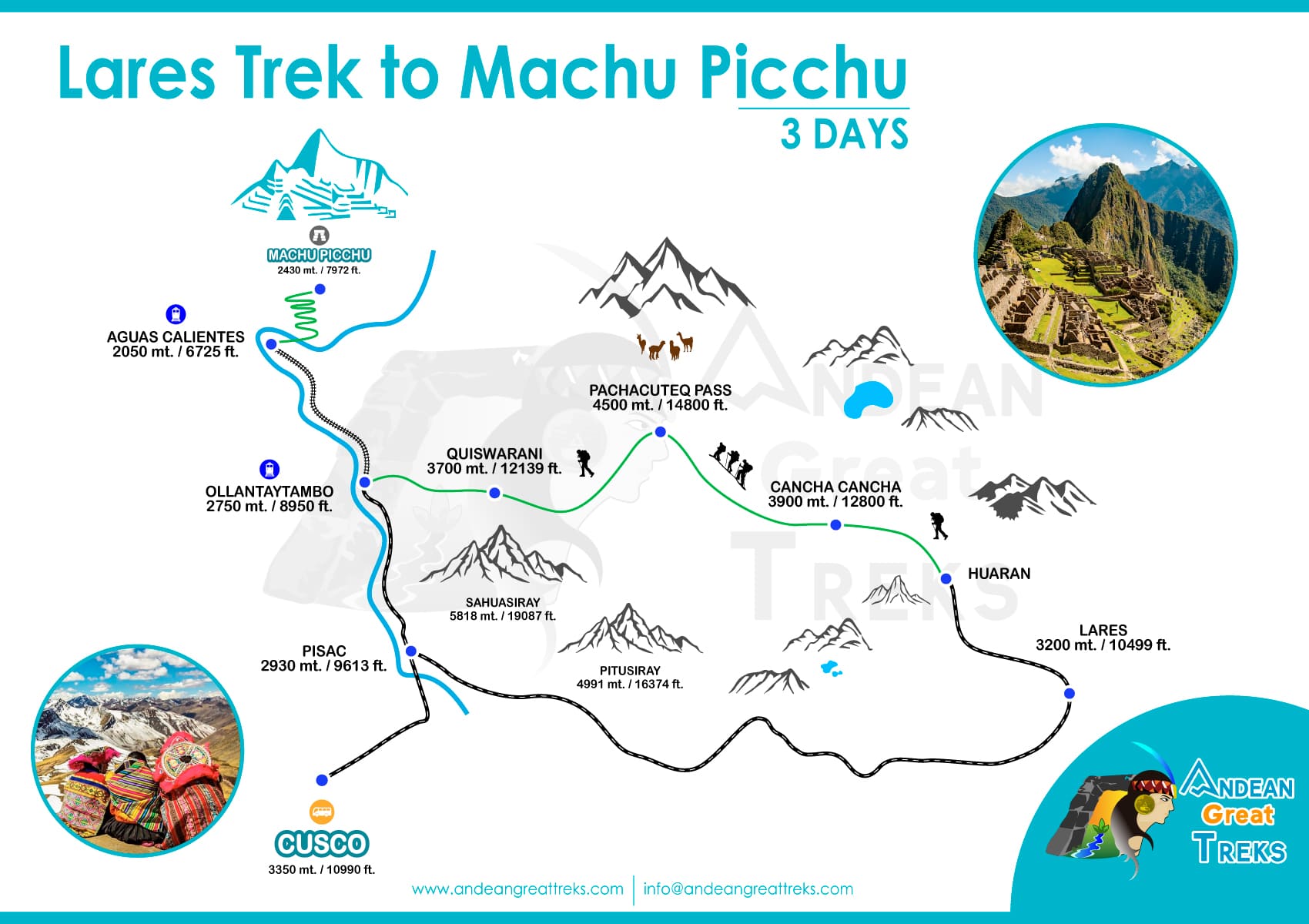 trip overview
included
trip highlights
activities
accommodations
itinerary
packing list
faq
essential trip information
best season to travel
price & availability
reviews
Reserve Online
trip overview
included
trip highlights
activities
accommodations
itinerary
packing list
faq
essential trip information
best season to travel
price & availability
reviews
Reserve Online
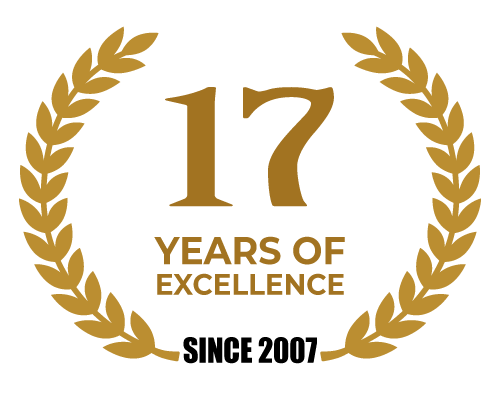 CREATING AUTHENTIC TOURS IN PERU
CREATING AUTHENTIC TOURS IN PERU

The Lares Trek to Machu Picchu combines high Andean treks with an opportunity for genuine interaction with the locals in the most remote villages of Cusco. This is a unique itinerary to the Lares Trek Valley, designed by Andean Great Treks that includes Machu Picchu.
Two days of trekking, away from the crowds and deep into the Andean nature. A guided tour through Machu Picchu at dawn, the best time to see the Lost City of the Incas. During the Lares Trek, you will enjoy the train ride to Machu Picchu. This is one of the most impressive train journeys in the world, giving you the opportunity to enjoy all the magnificent Andean landscapes of Cusco.
Andean Great Treks is the only tour operator that will take you through the most isolated indigenous communities that keep the Inca culture alive and you will have the privilege of interacting with them. Our tourist route is one of the most picturesque, with majestic glaciers, amazing blue glacial lakes, waterfalls, llamas and alpacas.
**Huayna Picchu and Machu Picchu Mountain are optional treks within Machu Picchu Citadel which do not include a guide. The climb is usually done on your own after your tour of Machu Picchu Citadel. If you would like the extra hike to be guided, please request in advance. There is an extra cost for this extra guided tour.
The Lares Trek to Machu Picchu has two hiking levels, Vigorous (the first two days will be challenging) and Moderate hikes, participants should be able to hike 3–6 hours (up to 8 miles) without major discomfort over terrain with some steep grades. For vigorous hikes, participants should be strong hikers in excellent shape and able to hike 6–8 hours (5–10 miles) on trails with steep ascents and descents. Much of the trip is between 11,000’–15,000’ in elevation, making activity more challenging.
We highly recommend a conditioning regimen consisting of activities such as hiking, jogging, stair climbing or cycling beginning several months prior to departure to get in shape for the adventure. The better shape you are in, the more you will enjoy all this trip has to offer.
The first two days will be a very steep terrain with little oxygen, and very cold temperatures. The third is the tour by bus, train and short walks.
Today we are going to pick you up early from your hotel in Cusco at 5:00 am, then we will go to the Sacred Valley of the Incas, during the trip you will enjoy a beautiful sunrise and the majestic view of the Vilcanota River. The first place to visit is the archaeological center of Unu Urqo, which in Inca times was one of the most revered religious sanctuaries, since it is believed that the rituals of the cult of water and Pachamama (Mother Earth) were performed there.
Nearby is the town of Huaran where we meet the muleteers and their horses, who accompany us both days. The ascent is made through a fertile valley surrounded by trees and the river that descends from the Pitusiray glaciers, Sawasiray. At noon we will have our lunch in the middle of nature, prepared by our cooks. One more hour of ascent we will arrive at the town of Cancha Cancha (3,900 m/12,800 ft), this is one of the communities, whose inhabitants are dedicated to grazing alpacas, llamas, and sheep. They also grow the most delicious potatoes in Cusco, some families with the help of NGOs lagoons have developed trout fish farming. Together with your guide you will be able to visit one of the local houses. You will learn all about life in a traditional Andean village, with your guide as interpreter. After dinner, your guide will show you the Inca constellations that they relied on for their agricultural guidance and still do to this day.
After our delicious breakfast, we begin our 7-hour trek to the highest point of our trek, Pachacuteq Pass (4,500m/14,800ft). This is where you will have to do your best to overcome this great challenge in the Andes, a good element to help you overcome the height is to drink coca tea, and also be very well motivated. Before noon, we crown the highest pass of the Lares Trek, from where you can see the most important snow-capped peaks of the Vilcanota mountain range. After some photos we must descend to the community of Quiswarani (3,700m/12,139ft), this trek will take an average of 3 hours, traversing remote lakes, herds of alpacas, steep valleys and spectacular mountain views.
We also meet its inhabitants, who wear their colorful ponchos, in their daily work, with whom you can interact in the Quechua language (language of the Incas). Your guide will act as your interpreter to translate and teach you some of the Quechua language.
After lunch, our private transport will take us to the town of Ollantaytambo, where we will have to take the train to the site of Aguas Calientes, which is the closest city to the wonder of the world Machu Picchu, which you will visit on the third day.
This day the tour in Machu Picchu will take place early in the morning, after getting ready at the hotel, we will take the bus at 5:30 am. After a trip along the road surrounded by vegetation and impressive views of the Putukusi mountain, we will arrive at the access point for the sacred sanctuary of Machu Picchu.
First before passing the control, those who wish to use the hygienic services will be able to do so. Since there are no bathrooms inside Machu Picchu, if you are going to go outside once inside, unfortunately you will not be able to re-enter.
Our visit to the wonder of Machu Picchu will be through circuit number 2, since it is one of the most complete. In this tour you will be able to go up to the famous guardian’s house from where the postcard photo of Machu Picchu will be taken, then you will pass through the main door, the ceremonial plaza, the Inca’s house, the ceremonial fountains, you will be able to see the temple of the sun but not up close; You can also access the pyramid where the sundial is located.
Continuing with the circuit you will arrive at the sector of the sacred rock, and finally you will visit the urban area where the royal houses of the Inca nobles were, and also the hall of mirrors. After 3 hours of travel we will retire with our guide, and once outside you can consume a drink or food. Because inside the complex is prohibited.
Then you can take the bus down to the town of Aguas Calientes, where you will have enough time to have your lunch. At 2:30 p.m. it will be the time of the return train to the Ollantaytambo station, where your return transportation to Cusco awaits you, arriving at approximately 7:00 p.m.
When packing for your Lares trek, you should keep in mind that it is best to dress in layers due to the weather variation. The variety of clothes that you must pack to dress in layers is key to your walk, from the morning when it is quite cold until mid afternoon when the temperatures rise and reach their peak and then freeze again at night. Stratification is also useful as you ascend high passages that are exposed to winds or descend into shady valleys.
Effective stratification only works if each layer allows moisture to pass and escape into the external environment. In fact, the best layered clothing, such as wool, promotes moisture transfer through its absorbent properties. Cotton and denim absorb moisture and, therefore, should be avoided.
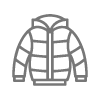 warm jackets
warm jackets
 Hydration bladder
Hydration bladder
 wool socks
wool socks
 camera
camera
 scarf
scarf
 first aid kit
first aid kit
 hiking shoes
hiking shoes
 Dry bags
Dry bags
 Trekking Poles
Trekking Poles
 sun cream
sun cream
 Snack
Snack
 sun hat
sun hat
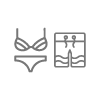 bathing suite
bathing suite
 rain coat
rain coat
 Sandals
Sandals
 insect repellent
insect repellent
 Passport
Passport
 Down Jackets
Down Jackets
 toilet paper
toilet paper
 daypack
daypack
 Wool cap
Wool cap
 head lamp
head lamp
 gloves
gloves
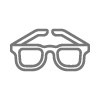 sun glasses
sun glasses
 cap
cap
 extra cash
extra cash
 Trekking pants
Trekking pants
Lares trek is not a little known route. But, it comes to captivate every visitor. During the tour you will be able to appreciate natural wonders; like waterfalls, rivers, beautiful landscapes, thermal medicinal waters and snow-capped mountains; as well as, you can find cultural attractions.
The Lares trail, is a trek that you should not miss, one of its main reasons is the diversity of attractions that you will be able to appreciate during the 3 days, thus being the fourth day one of the most anticipated, since that this day you will visit one of the wonders of the world, Machu Picchu!
Lares Trek is located to the north of the city of Cusco, about 98 kilometers by road (almost 3 hours 30 minutes by car).
Lares village is also 45 kilometers from the town of Calca, the most important in its vicinity, which also offers tourist attractions to visitors. Geographically the town of Lares is 3,150 meters above sea level.
Lares is one of the eight districts that make up the province of Calca in Cusco. It has an Andean geography with beautiful landscapes and close to lagoons and snow-capped mountains. Its main tourist attractions are its thermal baths and the hiking route known as the ‘Lares trek to Machu Picchu’ (4-day route).
The town has a total area of 74,467 square kilometers. According to statistics taken in 2017, it has 5,743 inhabitants. The town is located in a small valley surrounded by the high snow-capped mountains: Sihuasiray, Chicón, Sirihuani and Capacsaya.
In the Inca era, according to Martin de Murua in his work “History of the Incas”, he states that before the arrival of the founders of the Inca empire, the Cusco valley was inhabited by three partialities; The Laris, Poqes and Huallas; that they were people of low and poor social status who had dominated the entire area that now constitutes the province of Calca; these were belligerent tribes that integrated the communities that inhabited these fertile valleys. Thus, the Laris would have formed the Lares culture in what is now the Lares district, and the Hamp’as would later become the current Amaparaes community.
With the expansion of the Inca Empire, this very productive valley was conquered by the Inca Wiraqocha, who dedicated great importance to these lands, so he built an Inca capital in the city of Calca, from where he controlled the production of fruits, coca leaf , and maiz.
The Lares district previously seems that the capital or center of the Lares culture has not been the current capital of the district because in it there is no trace of ancient cultures, nor in the urban conformation that is completely Spanish, nor in the walls and foundations of the buildings, it is thought that the center of the Lares culture was the population of Choquecancha, already displaced from the citadel of Antawala.
In the Colonial era (1535-1824), the entire area of Lares, therefore Choquekancha, was not exploited by the Spanish because it was located in a completely uneven terrain, they only maintained relations for the trade of some products.
In the Republican era (1824 to the present), the region acquires its greatest splendor as part of the Province of Calca, Department of Cusco, Lares acquires the category of District by virtue of the Law of October 22, 1,892, with its capital the current town of Lares.
Etymologically, the word “Lares” comes from that other word of Aymara origin “Laris” which means maternal uncle and sometimes, all relatives on the mother’s side.
During the route of “The Lares Trek” you will cross different altitudes from 4,800 meters above sea level, the highest point, this will be the second day of the walk and will descend to 2,050 meters above sea level, this being the last day.
The district of Lares has a geomorphology that generates different landscapes varied and microclimates. The southwestern area has characteristics associated with cloud forest, while to the north-west Andean characteristics. Regarding its physiography, it is varied with plains, hills, knolls and terraces.
The study area of Lares has very young geological formations, whose geological structure has the same initial process as the Sacred Valley of the Incas, for which it is named for a landscape of mountains, with rock structures assigned to the Permian. The outcropping rocks are sedimentary among them we have: shale, conglomerate limestone, quartzite, slate, metamorphic, phyllite; belonging to the Lower Paleozoic, “in Lares there is an abundance of epsomite, that is, magnesium sulfate (Ccollpa), used in dry cleaning; the most used are; cupric pyrite, iron carbonate and quartz, there is also porphyry, sandstone, feldspar, micaceous”. The Peasant Community of Lares presents a very uneven topography of pronounced reliefs with hills with steep flanks and variable slopes; moderately inclined from 15-25%, with strong steep inclines from 25-50% and very steep from 50-76%.
The Ollantaytambo – Lares – Huaran Valley stretch locally crosses three large geological domains, whose nature is sedimentary, metamorphic and igneous; whose ages vary from the Cambrian, Paleozoic (like the oldest rocks) to the Cenozoic (with the recent Quaternary).
Yes it is necessary, most tourists suffer from altitude sickness, body imbalance, among others, due to lack of acclimatization, but rest assured! It is completely normal and natural for our body to react to changes in height, temperature, change in diet, among other factors.
If you go on a long hike at a higher altitude than where you came from, you can take advantage of the acclimatization period by doing light physical activities without putting too much strain on your body. An acclimatization period of three days is recommended; It is suggested that the first day you rest, if you start to suffer from altitude sickness you can drink Coca leaf tea (highly recommended natural remedy) or a pill for altitude sickness, if the situation worsens remember to consult a doctor before self-medicating. If all goes well, then from the second day you can do short jogs, yoga, aerobics.
If you miss this acclimatization period, it is likely that your body may suffer a decompensation in the middle of the route and it could be dangerous if you are very far from a health center, the staff would have to take you to the nearest health center and they would be in a race over time in case you are in very poor health. All travel agencies carry a first aid kit and the staff constantly receive training in first aid, among others, but sometimes it is not enough if the situation gets out of control and worsens.
Remember that your health is very important!
Altitude sickness or soroche as some call it is very common; It is a natural reaction of the body when going through sudden changes in height. Subsequently, the cause for this is the lack of oxygen in the body (hypoxia). It usually occurs in people who come from a very low altitude. Whose destination has an altitude greater than 2000 meters above sea level which presents with the following symptoms:
Mild symptoms:
This list of symptoms can be alleviated with coca leaf tea (highly recommended; only drink it during the day. Therefore, at night it is not recommended as it does not help you fall asleep and could be mistaken for a symptom). Altitude sickness pills (check with a doctor before self-medicating). Descend to a lower altitude area. Drink hot infusions and remain completely rested. If the situation does not improve, it is advisable to call a doctor.
Severe symptoms:
This list of symptoms, unlike the previous one, is more dangerous. These can be alleviated with the administration of oxygen through a mask. Immediately descend to a lower altitude. Medical attention is necessary since an inappropriate maneuver can be fatal for the patient. Likewise, it is suggested to keep the body hydrated by drinking at least 3 to 4 liters of water. Avoid alcoholic beverages, and add a diet of carbohydrates and sugars.
The weather during the walk is cold and temperate since it is located within the provinces of Calca and Urubamba. Likewise, these provinces have two very defined seasons such as:
Rainy season:
This season includes the months of November to March. During these months there will be rainfall, mighty rivers. Therefore, the roads will become bumpy and the sky will always be cloudy; As for the temperature, the maximum registered is 18° C and drops to 7° C.
Dry season:
This season includes the months of April to October. During these months it is advisable to take walks; because the roads are in better condition. However, the presence of rains is very occasional and snow is rarely present in higher altitude areas. Of course, the months of June and July are frost season. Therefore, these months will be colder than usual with the presence of snow.
During this season the maximum temperature is 22° C and the minimum is 2° C.
It is recommended to do the Lares Trek during the dry season between the months of April to October. Because in this season the presence of rain is minimal. The roads and highways will probably be dry. During the months of June and July there is presence of snow during the first night. The presence of this weather phenomenon is due to the intense frost that is very common in the high Andean areas of Cusco. Therefore, it is recommended to bring warm clothing.
The high altitude means it can get quite chilly, especially during the Andean winter (May – September) when the temperature can drop to below zero degrees (Celsius) at night. It can still be cool at other times of the year and so we recommend bringing thermal underwear and a warm sleeping bag. You can purchase warm, inexpensive and locally made hand-woven hats and gloves in Cuzco.
Before you embark on your trekking adventure, you will meet with our Trekking Operations Manager for an extensive briefing. Route, safety procedures and health issues will be discussed in detail and you have enough time to ask any remaining questions. Your trekking gear will be inspected to ensure that you have everything you need to be safe and comfortable. If you are missing any gear, you can rent it from us.
During your LARES TREK, you only carry your small backpack with essentials such as water for the day’s hike. Our Horses will carry all equipment, food and additional luggage.
Our permanent mountain guides will lead the way. They are responsible for your safety and will encourage you and lend a helping hand, but also call the trekking off due to weather, altitude sickness or injury, if necessary. Your safety is paramount to us. Most of our mountain guides have been part of our team for many years, been at Machu Picchu hundreds of times and all receive regular training. You are in good hands.
Our cooks are miracle workers. With simple gas cookers, they conjure up 3-course feasts, hot drinks and snacks to revive and nourish you when you need it most. Drinking water comes from mountain streams and is boiled before you drink it.
On LARES TREK to Machu Picchu, you will sleep in high-quality two-person tents. The tents will be pitched and taken down by our team of porters. When you arrive at camp after a long day’s hike, your tent will already be waiting for you. While there are no showers on the camping routes, you will be provided with a bowl of hot water in the morning to start the day fresh.
This walk is not very challenging, the only day in which you will have more physical effort will be the second day. Because part of the route is uphill until you reach the highest point of the entire tour. Next, descend for approximately 4 hours to the camp; the other days will be easy to moderate walking level. However, it should be noted that to carry out any type of walk you must be in constant physical preparation.
Yes; the minimum age to do the lares trek is 12 years old, if necessary you can rent a mule, so that it helps the little one in sections that are too challenging for him; and the maximum age is 65 years, in this case it is necessary to have a medical certificate, which guarantees the good physical condition in which you are.
To do the Lares trek or any other, it is important to be in good physical condition or to be in constant training. Due to the fact that part of the sections of these treks become challenging and it is necessary to be prepared for it.
It is important that you bring the physical document that you provide to the travel agency, since the data on this document will be used to purchase your entrance tickets to the citadel of Machu Picchu, trains and accommodation.
It is important that you carry the original identity document (passport, immigration card, identity card) that you provided to the travel agency, since these data were used to purchase all your tickets and accommodation reservations.
It should be noted that, at no entrance (archaeological site, hotels, train, bus) do they accept photos or photocopies of the identity document.
No, llamas, pack mules and/or horses will be provided to carry your personal items. You will still need to bring a day backpack to carry any essentials you might want or need, such as water, snacks, camera, sweater, rain jacket, etc.
You will have a thorough briefing with your guide 1 or 2 days before your Lares trek to Machu Picchu. Your guide will meet you at our office in Cusco and you can take this opportunity to ask questions and make any final preparations.
Andean Great Treks is proud to have the best staff of chefs specialized in high mountains, with more than 15 years of experience, in the different trekking routes in Cusco. On our Ausangate route we provide you with the best food service every day, our chefs will prepare meals with 100% fresh and organic foods, since our company is focused on community work and support for farmers who provide us with their best fruits. You can taste the best Peruvian and Cusquenian cuisine, during the breakfast we will have pancakes, omelettes, coffee, milk,butter, cereals, and very nutritious breakfast of Cusco based on oatmeal, quinoa, wheat, etc.
Lunches and dinners are served buffet style, such as sauteed loin, quinoa chaufa, salads, vegetable soups and products from the Andes, chicken, steak, alpaca.
If you are allergic to any type of food or do not consume gluten, or are vegetarian, it is no difficulty for us as we are trained to provide food under these food standards.
In general, Andean Great Treks handles an order and quality in the handling of the products, taking care of their safety so that no illness or discomfort happens during the days of hiking on the Ausangate mountain.
Andean Great Treks has professional, knowledgeable, dependable and experienced guides, who all are well trained for us every year. All of our guides have spent years exploring the mountains and studied in Universities and Institutes of Cusco. All guides speak fluent English and have a great knowledge of the various trekking routes. Our Guides will have the pleasure of guiding you in the most beautiful trails in the Ausangate Trek, Inca Trail, Lares Trek, which will enhance your holiday experience and make it a real success. Our guides are trained in first aid and know how to do in any emergency situation. And most importantly our guides are very friendly and enjoyable and want to share with you the faith of Peru.
We recommend purchasing travel insurance if you plan to trek in Peru. Most of the trekking spots in Peru are very remote so if something goes wrong you will likely need an emergency evacuation and that can be incredibly expensive.
When choosing travel insurance, be sure to purchase a plan that covers high-altitude treks and helicopter rescue, just in case.
Sleeping bags are not included and so we recommend bringing a compact three-season sleeping bag. If travelling between May and October a 4-season sleeping bag is recommended. These can be rented in Cuzco for approximately $20 for the length of the trek. Some renters may choose to bring a sleeping bag liner or sheet. Foam mats are provided however some travellers also bring their own self-inflating mat (ie. a Thermarest). These may also be rented in Cuzco for approximately $15 for the length of the trek.
We recommend that you bring a refillable water bottle as boiled water will be provided in the morning at breakfast, at lunch and every evening after dinner.
Our cooks prepare excellent high-energy meals appropriate for a trek of this nature. The menu usually includes pasta, rice, chicken, fresh fruit and vegetables and a variety of oatmeal, eggs and other breakfast foods. Vegetarian alternatives are available upon request at the time of booking.
There is no restriction for a visitor to try the Lares Trek on their own. However, unlike other walks such as the Salkantay Trek or the Choquequirao Trek, the routes are not well marked, so it is difficult to follow the course. Remember, there are six different routes, so it is best to have a guide who knows the route that you intend to do.
To do the Lares Trek on your own, you must understand which route to follow. For this, a good map is necessary. In addition, the inhabitants of this region are mostly Quechua speakers. If you get lost, don’t count on everybody knowing Spanish, or finding somebody who speaks English.
Take the Lares Trek to get to know about life in the Peruvian Andes Mountain, because you will witness a more authentic way of life of the Quechua People living in this part of Cusco; and there you will have a chance to learn about their wisdom, religion as well as their philosophy. Besides only mountain villages and the local culture, enjoy the clear blue lakes, valleys inhabited by Alpacas, the alluring mountain peaks, and many marvels this trek has yet to offer.
If you are used to hiking with poles, bring them, they are going to be worth it. You are going to use them to avoid nasty falls hiking down as well as to keep your ankle joints and knees safe on the mountain trail.
No, for most of the hike, there is no Internet on the Lares Trek until the Ollantaytambo town, or if there is, it will be a slow and broken internet connection.
The most common Lares trek covers a 37 km pathway, starting in Lares Hotsprings, throughout Quiswarani camp to Huaran hamlet in the Sacred Valley. It involves a 3-day trek, and after the 37 Km hike, the adventure ends with a magical visit to Machu Picchu park on the fourth day.
The highest point to get to, when hiking the standard Lares trek to Machu Picchu, is the 15 400 ft / 4 700 mountain pass, a mountain pass by the name of Pachakuteq pass. And this mountain hike is completed on the second day of hiking, then on the third day is the entry on the Sacred Valley Ollantaytambo, and subsequently the train ride to Aguas Calientes town.
The maximum group size is 8 persons. Our groups are between 2-6 persons. Andean Great Treks specializes in SMALL, PRIVATE groups and provide a personalised service.
You will have 1 cook per group. The number of horse man depends of the size of the group. For a group of 2 trekkers, they will have 1 horse man, 4 trekkers will have 2 horseman, 6 trekkers will have 3 horse man, 8 trekkers will have 4 horse man.
It has been highlighted by most of our clients, especially by lady trekkers, who want a private, clean and sanitary toilet!! Andean Great Treks toilet facilities have an individual tent and a “camping toilet with a seat.” Our toilet is always set up a comfortable distance from our campsite. At night if you need to use the toilet it is readily accessible and clean.There are hot showers and hot water pools to soak in and relax on the first day of your trek at the Lares Hot Springs. Be sure to bring your bathing suit.
In the scenario that you are unable to finish the lares trek due to a health issue, Andean Great Treks will assist you to the nearest town for help with transportation. We always carry oxygen on the trek for any respiratory problems In extreme cases, a helicopter pick up can be arranged at your own expense. (Travel insurance required). There are no refunds in the unlikely situation that you are unable to finish the Lares trek.
Generally, those who have to be assisted off the trail are taken to the Lares Village and then to Calca Town, and if they recover quickly, they then continue the journey to Aguas Calientes (cost incurred by trekker) and visit Machu Picchu according to original plan.
Tipping is not mandatory on a guided Lares Trek, but it is highly recommended. You will be amazed by the amount of work and dedication that the guides, chefs, porters and other crew bring to your experience. Tipping is a great way to show your appreciation for the incredible experience. A good rule of thumb is 30-50 soles ($8-$15) per hiker per day. All the hikers on the team can pool their tips and then hand to the trekking team, who will distribute among themselves.
Yes. This is very important!!! We recommend that you bring 300 to 400 Peruvian soles. It is possible that you may not need any of this money, but just in case of an emergency you should make sure to have plenty of cash. If you are struggling on the route, you can use the money to purchase alternative forms of transportation such as: car, horse.
On all Lares Trek routes, you will cross many indigenous communities, who will receive you very happy for your visit, and will also offer you their handicrafts that they produce, if you want to support these people, do it, since the little, that they produce in their crop fields, it is not enough to lead a comfortable quality of life. Our friends of the high Andean communities are also very kind, do not worry when conducting an interview or a photograph, since your guide will be the one who can translate it so you can establish a conversation and thus learn more about their experiences and customs. It should be understood that these communities on the Lares Trek route are considered one of the last that still practice the traditions inherited from the Incas. They still perform ceremonies of offerings to the Pachamana or Mother Earth, coca leaf ceremony and the most important festivals according to the Quechua calendar.
Andean Great Treks is a serious and formal tour operator travel agency. As such, in all our Trekking and Lares Trek activities we normally carry the oxygen tank, which can be used if one of our clients requires it. Remember, it is a medium oxygen tank, which is used as an emergency mediation to stabilize the tourist, if it still requires more oxygen, you will be evacuated to a closer control point where a vehicle passes, and will also descend to a lower height, to avoid altitude sickness or a tachycardia.
A first aid kit is also carried, which serves to help tourists in emergency circumstances. But have this information: No person who does not have the certification of a doctor, pharmacist or nurse can prescribe any medication, since we do not know the true medical history of the patient, which instead of improvement can worsen their situation. That is why we suggest as an important measure, if possible, bring your own first aid kit with the pills that a doctor has prescribed before starting the Lares Trek.
STEP 1
STEP 2
STEP 3
STEP 4
Our company will be able to refund your reservation deposit, in case you cannot complete your adventure in the Lares Trek circuit. But this request must be sent to the company’s mail, with a minimum of 15 days before starting your Trekking. Otherwise you could be charged some administrative costs.
A very important issue to give, is that if you paid for the entire tour, and for any reason you decide to cancel the tour less than 48 hours, this can only be done under certain conditions, by your travel agent, who will inform you of the expenses that should cover.
Unfortunately, the 5% charge is completely out of our hands. This fee does not go to us, but to PayPal and VISA. There is really no way around it.
For the purchase of Lares trek to Machu Picchu, it is necessary to have an identity document, if you have a passport, it must have an expiration date greater than 6 months from the date you will enter the country. For example, if you plan to visit on July 1, 2021, the expiration date of your passport must be at least February 1, 2022, if you have a higher expiration date it will be favorable, otherwise. You must renew your passport and enter the country with the renewed passport.
In case you have an identity card or foreigner’s card, the 6-month rule mentioned above also applies to this type of document. Also, you should make sure if the country you come from needs a Visa to enter Peru.
Once the purchase of the tour has been made, you must send your personal data so that the agency in charge can make the purchase of your tickets such as: entrance ticket to Machu Picchu, bus tickets to the citadel of Machu Picchu, hotel reservations and travel tickets. trains.
The Lares trek is not subject to availability of space on the route as is the Inca Trail. But, it is recommended to book at least 2 months in advance. Due to the fact that the entrance ticket to the citadel of Machu Picchu does have limited permits.
In case you want additional tickets for Machu Picchu Mountain or Huayna Picchu Mountain. However, it is necessary to make a reservation at least three months in advance. Because, the entrance tickets to the mountain have even greater restrictions than for the citadel of Machu Picchu.
Once we have purchased your tickets, with your security deposit, you can only change your start date if you pay an additional amount. This amount is usually around $50 USD. The reason for this is the tickets we purchase are non-refundable and non-transferable, so we are not allowed to simply change your tour date.
It’s best to pack lightly for Lares Trek. Generally hikers leave the bulk of their belongings safely in storage at their Cusco hotel, and bring only their hiking pack for the trek. This list ensures that you have everything you need for a guided trek without overburdening yourself.
Mountain clothing
Head:
Thorax / Core:
Bottom:
Hands:
Personal Team
Hiking gear
Electronics
Toiletries
Others
We will provide you with a duffel bag for all of the treks. You can carry about 7 kilograms in the duffle bag. These duffle bags will be carried by horses throughout the trek. You only need to carry a small backpack/day pack with the items you might need throughout the day like sunscreen, bug spray, jackets, or snacks.
Yes. You can leave your luggage at our offices.
You can bring it with you to your briefing, or you can bring it when you are picked up in the morning to leave for your trek. The driver will bring it back to our offices. You can also arrange to have it dropped off at your hotel once you return from the Lares trek.
Yes, the Lares Trek include the entrance to the citadel of Machu Picchu. Therefore, on this route the visit to Machu Picchu takes place on the last day for a guide of 1 hour and 45 minutes. During this time the main centers of the Inca Citadel are visited, once the guide is over you no longer have the option of re-entering the citadel. For this reason, you should ask the guide for some recommendation to be able to spend a longer time inside the Citadel of Machu Picchu.
The visit time in the citadel of Machu Picchu is an average of 1 hour and 45 minutes to 2 hours, this time is the maximum that is used to be able to make the main circuit that contains the most outstanding sites of the Historic Sanctuary.
Note: You should know that there is no free time to visit on your own after the guide, unless you buy one of the extra hiking tickets (Huayna Picchu or Machupicchu Mountain) so you can re-enter the attraction.
On the last day of your adventure after the guided tour in the Llaqta of Machu Picchu, it is possible to do some of these famous walks that are Machu Picchu Mountain or Waynapicchu. Therefore, you should know that they are not included in the tour you contract with our travel agency.
The most important, to be able to purchase a ticket for any of these routes, is to pay an extra cost of 30 USD on average. Likewise, you must request the reservation of any of these walks 4 months in advance or more. Since, a limited number of tickets are offered per day which are highly coveted by hundreds of travelers.
Here are some differences based on these mountains:
Huaynapicchu Mountain:
Also known as “young mountain”, it is the most popular so income is quite limited. Therefore, you must make your reservation at least 5 months in advance. This mountain is located North East of the citadel of Machu Picchu, at about 2,700 meters above sea level, made up of archaeological remains, narrow and steep trails that really defy all gravity. For that reason, its great appeal.
Machu Picchu Mountain:
Also known as “old mountain”, it is not as popular as Huaynapicchu, but the route is surprising, consisting of abundant flora, wide and easy to walk trails, it is located to the South West of the citadel of Machu Picchu, at about 3,070 meters above sea level. , it is a hike that does not require much physical effort and offers wonderful panoramic views from the top. Tickets are limited, but they don’t run out quickly so there’s more time to make your reservation; it is recommended to reserve the entrance at least two months in advance.
When doing any of these routes, it is necessary to take into account the departure time of your train to Ollantaytambo (remember that your check-in is 30 minutes before your departure time). Similarly, you have to calculate the time. Since, you will have to queue for 1 hour to get on the bus that will take you to Aguas Calientes and this tour lasts 40 minutes.
Huayna Picchu :
The hike to the summit is approximately 45 minutes, along narrow and steep Inca stairs. Once at the top, you get to see the Citadel of Machu Picchu and its surrounding hills and valleys. This is the famous peak in the background of every iconic Machu Picchu photo. Summiting Huayna Picchu is always a top item on most Machu Picchu visitor’s lists which means that you usually need reserve this mountain 6 months in advance. Only a certain amount of people are allowed to hike this mountain each day (currently 400). Along this trek you’ll see breathtaking views of the Machu Picchu ruins. The limited number of tickets is a restriction set forth by the ministry of culture in Cusco, not by Andean Great Treks. This is completely out of our hands unfortunately.Tickets for this mountain are non-transferable.
Machu Picchu Mountain:
The hike to this summit is approximately 1.5 hrs. Once at the top, you get a much higher vantage point so you have an amazing view of the Citadel of Machu Picchu and its surroundings. This hike is a great alternative to Huayna Picchu. It is ideal for those who don’t want the hassle of fighting for a ticket, or who were unable to get one. Technically, spaces for Machu Picchu Mountain are also limited to 400 per day, as well it’s use to sold We simply need to reserve a space when we buy your entrance tickets. This trek is great because it will also take you high up like Huayna Picchu, offering great views. This trek has an easier incline (also making it accessible for those who fear the heights of Huayna Picchu), but the path is much longer making it equally as challenging in it’s own way.
Also, once arrived at the town of Aguas Calientes on the first day. You will have the opportunity to leave your belongings at the hotel reception or storage before going to Machu Picchu on the second day. And on your return to Aguas Calientes, before taking the train back to Ollantaytambo, you must pick it up.
You should not forget the restrictions that exist for entering Machu Picchu. Among them is the prohibition of luggage or backpacks that exceed 8 kilos or measures 40 x 35 x 20 cm.
The state provides a place where you can store your belongings at no cost. There is also another place, but it has a cost of S / 5.00 per person. Most visitors prefer to store in this second option, since they think that if they pay, it is because there will be much more security than the one that is free. However, both places are suitable for storing your things.
NOTE: Both Storages are located at the entrance to Machu Picchu.
Both the ascent and descent through the Huayna Picchu mountain take an average of 1 hour and 30 minutes.
The ascent time depends on the physical condition of the tourist.
In Huayna Picchu you can visit the Temple of the Moon and have an incredible experience at the top.
This is the ideal place to get the best photographs of the Inca City. A suitable visit takes 3 hours.
The tour of Machu Picchu delays the time of the tourist guide. This takes 2 hours on average. Today it is mandatory to enter the Inca City with a guide.
The visit includes a tour of the main tourist attractions of the place, such as: the Temple of the Condor, the Temple of the Sun, the Main Temple, the Intihuatana and more.
The visit will also leave time for the tourist to appreciate the Wonder of the World on their own.
You get the best of inca history and local culture
The Lares Trek doesn’t include as many Inca ruins as some of the other treks in the region, but it more than compensates with a look at local life and breathtaking scenery. Before trekkers start the hike, there’s a day tour comprising some of the most famous Inca sites around the Sacred Valley, once home to the Inca Empire.
The incredible agricultural terraces and Inca fortresses above the village of Písac and in the town of Ollantaytambo provide a fascinating look into how farming was maximized in the empire. Separating history from hiking gave me the time I needed to truly appreciate and understand the Inca Empire’s importance.
It’s not a “runner up”
With only five hundred permits issued a day for the Inca Trail normally, forward planning is essential. The Lares Trek, on the other hand, is relatively undiscovered.
Nevertheless, you will have heard many people comparing the two; to be honest, we don’t think it’s a fair comparison. They both offer up incredible experiences, but with different focuses. If you want to escape into the wild, experience local living in Peru and still challenge yourself on a hike, the Lares Trek may be more suited to you. And with the Lares Trek, there’s the option to take a train into Machu Picchu. Not only is this one of the most stunning rail journeys in the world, but it gives you the chance to enjoy a warm shower and get some shut-eye in a real bed before exploring Machu Picchu. The Inca Trail hikes directly into the Lost City of the Incas, so depending on how clean and comfortable you want to be for that big moment, the Lares Trek might be your winning ticket.
You’ll feel like you have the Andes to yourself
On a three-day hike, you could count on just one hand how many other tourists were hiking the Lares trail. The remoteness added to the magical and spiritual vibe that you’ll start to feel the second you arrive in Cusco. Sometimes on the hike you would just stop and listen to nothing but silence while surrounded by mountain peaks more than five thousand meters high. If you want to be humbled by nature, then the Andes will happily oblige.
It’s a great chance to live (and learn) local
The history of the Inca Empire was tumultuous. These days, however, Peru’s native Quechua residents are an important part of the country’s cultural fabric.
On the Lares Trek , you will visit a local family and learn about weaving, how to dye alpaca wool, and about a number of cultural traditions (did you know a Quechua girl must skin a Guinea pig to prove she is ready for marriage?). The Andean Great Treks projects provide real impact and opportunities for the local communities. (It’s also worth learning some of the local Quechua language before arriving to help you make the most of these encounters; not everyone will speak Spanish.)
The stars will blow your mind
Being a city slicker, it’s easy to forget how incredible the night sky truly is. High in the Andean Mountains, the Lares Trek will treat you to some of the most impressive views of the Milky Way and constellations you’ll ever see. Both nights, I sat outside clutching my warm coca-leaf tea until it became too chilly to admire the night sky.
Pack light and pack smart
On the Lares Trek, all of your belongings will be carried by pack mules and transported between campsites by porters. For this reason, minimizing weight is essential to help your four-legged friends out. In addition, keep your day pack as light as possible (we regret taking quite so much camera gear). The less you’re carrying, the more energy you’ll have to enjoy the hike.
Don’t let Day 2 beat you: The views are worth it!
While this isn’t the most challenging hike in the world, it’s no walk in the park. The altitude, especially on Day 2 — when you reach an altitude of 4,800 metres, the Lares Trek’s highest point — can affect even the healthiest and most acclimatized of people. Day 2 is the toughest day of the hike, so take it at your own pace, but soldier on. Once you reach the top, the views are truly incredible — trekking down through the Valley is a nice respite. Plus, no trekker is left behind: with an assistant guide on each trek, your group can take two different speeds, allowing some to go at a slower pace.
This is camping reimagined
Both of the Andean Great Treks campsites on the Lares Trek have fitted toilets and shower blocks. If you aren’t a fan of freezing first thing in the morning, We recommend washing with the warm water bowls provided in the morning. Oh, and a word to the wise: on the Lares Trek, wet wipes are your best friend.
One of the stand outs of the trek is the food: each meal was better than the last. Three courses of soups, fresh fish, egg dishes and delicious desserts somehow made it out of the kitchen each day. On the last, we were presented with a whole iced cake as congratulations for completing the trek.
Don’t make the mistake of skimping on the gear; these mountains are cold. If you don’t have a four-season sleeping bag, rent one. Plus, an air mattress and hiking poles are worthy investments.
Coca leaves are king
Altitude sickness is very much a real thing, so factor this in when planning for the Lares Trek. Even if you are taking altitude sickness-preventing pills (called Diamox) before you arrive or relying on acclimation to the altitude in Cusco, the coca leaf may be of use to you.
Chewing on these leaves is the go-to in the Andes for both medicinal purposes and to ease the effects of altitude. If you aren’t a fan of rolling these green leaves into a chewable ball, do take the tea when offered by the porters. Plus, if you stock up on a bag of the leaves from a market, you’ll have the perfect gift and conversation-starter when you meet local people.
Machu Picchu doesn’t disappoint
Ever worry that something isn’t going to be worth the hype? Well, Machu Picchu is not one of those places!
After completing the 36-kilometre hike, exploring these incredible ruins is the ultimate reward — and they are as impressive in real life as they are in all those Instagram photos you’ve spent years drooling over. While you may not have arrived on foot, the scenic train journey from Ollayntambo to Aguas Calientes will leave you speechless before rising early the next morning to bus up to the main entrance.
If there is one thing we can guarantee at the end of this trip, it’s that you’ll be planning your next one back as soon as you get home.
Archaeological Park of Ollantaytambo
It is located in the district of Ollantaytambo, with an area of 34,8000 hectares, located and adapted to the topographic profile of the land and is made up of two sectors: Qosqo Ayllu (current town) and Araqama Ayllu (where the ceremonial sector is located). ) complemented with agricultural areas (system of terraces) and storage for corresponding to an administrative and religious center. The Qosqo Ayllu sector presents an orthogonal urban configuration whose housing units are established by the Inca “kanchas” with a rectangular floor plan, with double-jamb trapezoidal access openings built with lithic material with a set rigging. The Araqama Ayllu sector (ceremonial sector) is accessed through the old Manyarqui plaza and is characterized by monumental constructions in adobe and stone. In the lower part there are enclosures that reach a height that varies from 2.20 m. at 7.00 m. built in adobe and that are associated with ceremonial water sources, highlighting “the Ñusta bath”, which corresponds to a fountain carved in a single piece of granite.
In the upper part, the Temple of the Sun stands out, which corresponds to a structure made up of six large carved rocks, associated with an “Intihuatana” and enclosures that were used as astronomical observatories. Currently this sector is in a good state of conservation, due to the fact that maintenance work is being carried out by the Ministry of Culture.
Pinkulluna Archaeological Site
It is located within the Archaeological Park of Ollantaytambo, it has an area of 8400.00 m2, located on a rocky outcrop in the upper part of the district, currently considered as a sacred hill of a productive and ceremonial nature. This architectural complex is made up of three rectangular-shaped enclosures with 14 access openings, with windows on the façade, with a height between 4.00 and 7.00 m. built with lithic material (slate) and joined with mud mortar, where you can see the treatment of the floor and walls plastered with mud, in a fair state of conservation
Choquecancha Ushnu Archaeological Site
It is located in the district of Lares, it has an area of 300.00 m2, it is located on a prepared plain around an open space (currently delimited by the temple, houses, medical post and communal hall); it is a ceremonial enclosure defined as “Ushnu”, it has a main access opening with a double jamb, 14 trapezoidal niches and 17 niches built with schist-slate-type stone with yellowish mud mortar, it can also be seen that the walls They have a 10% incline. The state of conservation of this structure is poor due to the fact that currently the upper part of it is occupied by the dwellings of the inhabitants of this populated center.
Hawqani Archaeological Site
Located in the district of Lares, with an area of 40.00 hectares, located in a chain of steep cliffs and steep hills, formed by outcrops of metamorphic rock, on which this important archaeological site was built, which is located made up of various sectors such as: Manto, Qoriwayrachina, Chaupimarka, Llukumarka, Hawqani, Taqeorqo, Machuyoq, among others; that flank the banks of the Lares and Amparaes rivers. It corresponds to a settlement that fulfilled functions of a residential, administrative, ceremonial and productive nature; strategically occupying the valleys and slopes of the Lares and Amparaes rivers. It is made up of rectangular, circular and ovoid-shaped enclosures, associated with agricultural terraces (andenerías) that were built with slate schist stones with mud mortar.
Markaqocha Archaeological Site
It is located in the district of Ollantaytambo, it has an area of 6,000.00 m2, and is located on a river terrace, where you can see enclosures, chullpas, qochas, etc., with rectangular enclosures and circular chullpas. Some enclosures have access openings and trapezoidal windows, being observed in certain mud plastered walls. The walls of the enclosures reach a height that varies from 1.20 m. at 6.50 m. whose construction material is slate stone, joined with mud mortar. The place was of a ceremonial and residential nature having pre-Inca and Inca cultural affiliation.
Pumamarka Archaeological Site
Located in the district of Ollantaytambo, it has an area of 800.00 m2, made up of enclosures, warehouses, walls, chullpas, etc.; the enclosures have a rectangular floor plan and the qolqas have a circular floor plan with trapezoidal access openings and windows of similar characteristics, on the walls there is evidence of plastering with mud. The building material is limestone and slate type stone, joined with mud mortar. The place had a residential and military character in the Inca era, For being surrounded by walls that surround the entire site.
Ancashmarka Archaeological Site
Ankasmarka, a Quechua word that translates as the city of the eagle; cradle of important pre-Inca and Inca inhabitants. It is a city built in a strategic place in the valley and the Andes, in this place there are trails, food deposits, Inca roads and many agricultural platforms.
The Sacred Valley of the Incas is one of the places that you cannot miss on your trip to Peru; the great constructions legacy of the pre-Inca and Inca cultures strategically located in this earthly paradise, with impressive landscapes and beautiful skies as in Ankasmarka; when the sun shines on them. Its geographical configuration makes it an ideal place for rest and walks.
You can see more than 600 constructions dating from the pre-Inca and Inca times, rustic rigging with mud as a final finish, the constructions that have a circular shape; local stones were used for its construction, especially slate stone and mud. The diameter of the constructions are 4 by 3 meters in diameter with a door of one meter.
In the lower part there are other types of constructions, they are rectangular structures these were intended for housing. It crosses the side of the Cha’ipa stream. We can also see remains of an ancient Inka road, which is still used to this day. Ankasmarka was a populated center and its inhabitants dedicated themselves to grazing, especially the camelids.
Unu Urqo
This archaeological complex is located in the Sacred Valley of the Incas, very close to the city of Calca (about two kilometers away) and at an altitude of 2,930 meters above sea level. From the road that connects Urubamba with Calca we can see a beautiful terrace completely rebuilt with edged stone and that today its wide terraces are still used for growing corn.
This place consists of a huge rock that reaches six meters high. It resembles a toad and appears to have been worked on. His head is facing east. Opposite the head is the grooved body of a snake through which the water slid until it flowed into a well-carved fountain imitating the head of a snake with large round eyes.
Around the Waca there are other smaller and well distributed enclosures. In several of these enclosures we can see different niches and access doors. The material used for all this sacred complex is stone cut and joined with clay mortar.
The department of Cusco, one could say without fear of falling into unnecessary mistakes, has it all. It is, shall we say, a small country within another. Its varied climates, product of the profusion of ecological floors, its impressive relief and its proximity to the tropical zone of the planet determine the existence among its folds of a unique, incomparable biological diversity. We must not forget, furthermore, that Peru is considered one of the seven megadiverse countries on the planet due to the varied ecosystems created by the Andes mountain range when it rises above the continent and to the action of the marine currents that bathe its extensive coastline.
Geography treatises indicate that in the deep ravines and intermediate zones, forests formed by numerous tree, coniferous and broadleaf species are typical. In the lower areas, on the other hand, ferns, reedbeds, alders and ornamental plants with seasonal flowers are common. In the Quechua and Puna zone, ichu, queuña, waqo, achupalla de monte, raqui-raqui, moqo-moqo, jucucha, huejontoy, tabaquillo, paico and tintin predominate. Full life and nature on the roof of the world.
The situation of the native forests of Peru is doubly serious, by cutting them down or burning them, one of the activities that most damages Andean ecosystems, not only is the provision of valuable environmental services lost, but the flora and fauna that allowed the insurgency of life in the territory we occupy.
The Andean forests are varied, within each of them different tree species thrive. On the Ausangate Route, where queuñas, chachacomos, unkas, tayankas, wancartipas, wamaq’eros, chuyllures, jalastos, siracas, t’astas, capulí-pishay endure, natural life makes the difference.
The following are the most notable trees on the Lares Trek:
The Queuña (Polylepis spp):
It is an extremely resistant tree to the altitude and to the cold typical of the Andean high-plains. It has been proven that it can live beyond 4,500 meters above sea level. The Queñuales, especially those found in the Vilcanota mountain range, contain a very varied fauna and flora that is characterized by its high level of endemism. The forests of this species regulate the climate, prevent soil erosion and store large amounts of water that ultimately feed the course of springs and puquios.
The Pisonay (Erythrina edulis):
Pajuro, bean or red cedar is a tree common to the temperate zones of Peru, where it can be found adorning the main squares of some of its cities with its size. Its leafy foliage, its red flowers and its incomparable size distinguish it from other native trees, which are generally small and rugged. It is known that it was cultivated and used by the Incas. Its fruits, which are tasty, serve as food and its leaves, flowers, bark and roots are used to cure various ills and as a contraceptive in rural areas.
The Chachacomo (Escallonia resinosa):
It is a tree with a bright reddish trunk that was used by the Incas to dye beige cotton and wool fabrics. Its leaves were used to prepare infusions useful as a brain tonic. Its wood is an excellent fuel and chaquitacllas are made from its branches, the best-known plow of the ancient Peruvians; Possibly, the keros, the ceremonial vessels that dazzled the conquerors, were also made from the wood of this tree.
The Alder (Alnus jorullensis):
Huayau or Lambrán is a good-sized tree that can reach 10 to 15 meters in height and is distributed between 2,500 and 3,300 meters above sea level throughout the Peruvian highlands. It grows in the ravines and on the edges of the farms: it is a tree that, due to its open crown that allows solar radiation to filter, does not disturb the growth of agricultural plants.
The Ccolle (Buddleja coriacea):
Qolle, Quishuar or Puna Quishuar is a tall, straight tree with a dark green, globose crown. In the times of the Incas, its wood was used for the construction of houses and the manufacture of instruments and its leaves as an effective remedy against rheumatism. Currently, the peasants use it as a living fence or “retaining wall”. Its foliage provides good fertilizer to the farms. Apart from the uses mentioned, the Ccolle provides excellent quality wood for the manufacture of beams, doors, windows, lintels and for the elaboration of agricultural tools (yokes, plows, tacllas) as well as for handicrafts and props. It is resistant to rot and fungi even when it remains in the water, hence its usefulness for making gates and parts of irrigation canals.
The Sauco (Sambucus peruviana):
O Tilo is a 3-6 m tall tree that in good conditions can reach 12 meters. Its fruit, with a pleasant flavor, is edible and is used to make jellies and jams. A strong wood is obtained from its trunk, which is highly valued for construction in rural areas. Its leaves are used to dye and from its stems quenas and blowers are made to fan the fire. It is also used as a live fence, windbreak and pest repellent.
The Molle (Schinus molle):
It is one of the most visible trees in the towns and roads of the middle part of the province. It has been used since ancient times to cleanse and detoxify the urinary tract and kidneys. Also useful to combat rheumatism, with the branches, leaves and fruits a very effective bath is prepared to combat the evil of fright. The ash is used to make soap and the bark to dye wool or cotton yellow. Its fruits, dry and ground, are an ideal substitute for pepper. It is antifungal and a powerful remedy for bacterial and viral respiratory infections. It also serves, among other things, as an insecticide.
The Quishuar (Buddleja incana):
A tree that grows up to 8 m high, is characterized by having a straight stem and cracked outer bark, light ocher in color. It is common in the highlands of Ecuador, Peru and Bolivia. It tolerates high stoniness and its moisture requirements are moderate. Due to its dense foliage, it is used to make perimeter fences and protection against cold winds. Due to its excellent quality, durability and resistance, it is used in construction, cabinetmaking and props.
The llama (Lama glama) and the alpaca (Vicugna pacos) are the two most representative species of the varied fauna of the province of Quispicanchi and much of the Peruvian Andes. In our country, apparently the domestication of both South American camelids must have occurred five thousand years ago. The guanaco (Lama guanicoe) and the vicuña (Vicugna vicugna), the two remaining species of the quartet of these Andean mammals, have survived in the wild to this day. From an ecological point of view, South American camelids have perfectly adapted to the environment they inhabit. The natural grasses that they consume are appropriate for their nutrition and the padding of their hooves does not destroy the delicate soils of the high Andean plateaus where they are usually raised by the descendants of the llamichos and paqocheros of the high mountains of our country. Vicuñas and guanacos share the grasslands of the highlands of Cusco with an ungulate well known to walkers who go around Ausangate.
The taruca (Hippocamelus antisensis):
Andean deer, a deer of great beauty that inhabits the highest areas of the Vilcanota mountain range, in grasslands, very attentive to the presence of humans. Herbivorous, it usually feeds on lichens and wild grasses and, like deer, the species has striking antlers, in this case a double horn on the forehead. The loss of the quality of its species is in a vulnerable situation and it is estimated that in thirty years it will have lost, if the current conditions of degradation continue, thirty percent of its habitat.
Vizcacha (Lagidium viscacia):
A rodent related to chinchillas, very common in Peru, central Bolivia, throughout Chile, and in western Argentina. It could easily be confused with wild rabbits: its yellow or gray fur is thick and soft except for the tail, which is black. His ears are covered with hair. The vizcachas feed on ichu and are a food attraction for the wild cats that live in the Ausangate mountains:
The Andean Cat (Leopardus jacobita):
Osqollo, osqo misi or chinchay a severely threatened feline whose population in Peru is less than 2,500 individuals and the Pajonal cat (Leopardus colocolo).
Andean Puma (Puma concolor):
The second largest feline in America and fourth in the world after the lion, the tiger and the jaguar. Common in our continent from Canada to Patagonia, the variety that inhabits the Peruvian Andes is capable of adapting to almost all our ecosystems. It is characterized by being agile, elusive, silent and strong. Avoid unnecessary confrontations with other animals, including humans. Similar in appearance to African lionesses, males can weigh up to 100 kilograms, while females weigh up to 64 kilograms. It was a sacred animal in the time of the Incas, so much so that the city of Cusco, the Llaqta Sagrada, was built following the outline of its extraordinary anatomy.
If you are lucky and drive carefully along the rural roads of the province, you may come across some of the fabulous local fauna.
Lares is the habitat of the white-eared opossum or carachupa ittuto (Didelphis albiventris), the Andean long-eared bat (Histiotus montanus), the red fox or atoj, also the Andean fox (Pseudalopex culpaeus), the skunk, añas or skunk (Conepatus chinga). , the weasel or achocalla catay (Mustela frenata), the pajonal mouse (Akodon subfuscus), the Darwin mouse or big-eared mouse (Phyllotis darwini), the wild guinea pig, guinea pig or cowi kututo (Cavia porcellus), the sacha guinea pig, guinea pig bighorn or poronccoy (Cavia tschudii).
Andean Condor (Vultur gryphus):
For being a bird linked to the history of the men and women who populated Cusco and the Andean world. The Incas considered it “messenger of the gods” (Apu Kuntur) and together with the puma and the snake it was part of an animal trilogy linked to the sacred. The imposing bird is represented at one of the points of the chakana and one of the most visited rooms in Machu Picchu is precisely the so-called “Temple of the Condor”. Due to its ability to fly up to heights of 5 thousand meters above sea level, the condor was the only animal in the Inca worldview capable of communicating with the world of the gods and the stars. In Peru, the species is in danger as a result of the loss of its habitats and death by poisoning due to the profusion of carcasses to control livestock predators (pumas and foxes). According to the Red Book of Endangered Wildlife.
Giant Hummingbird (Patagona gigas):
A distinguished inhabitant of the middle part of the province is the Andean hummingbird or giant hummingbird, the largest hummingbird in the world. Intrepid aviator, it easily reaches 23 cm in size. Its beak, straight and thick, measures 5 cm.
It is generally found in arid habitats between 2,000-3,400 meters above sea level where it frequents shrubs, trees and cacti, preferably columnar. It is very territorial and aggressive, often chasing other hummingbirds while hovering with remarkably slow wingbeats, keeping its tail open. Their diet includes nectar and flying insects.
The Huallatas (Chloephaga melanoptera)
The Andean goose or huashua inhabits open land with short grass in marshy areas of the humid valleys. Also the surroundings of lakes and ponds. They are found in pairs or in scattered flocks, males are usually larger than females and reach a size of about 90 cm. Both are white with a pink beak and legs.
Another inhabitant of swamps, lake shores and flooded fields is the yanavico (Plegadis ridgwayi) or puna ibis, common between 3,200 and 4,500 meters above sea level.
Other very frequent birds in the areas visited by guides and hikers: neotropical cormorant (Phalacrocorax brasilianus) or cushuri, Andean duck (Anas flavirostris), puna duck (Anas puna), white heron (Ardea alba), huaco heron (Nycticorax nycticorax ), Andean bandurria (Theristicus branickii), puna hawk (Buteo poecilochrous), Andean caracara (Phalcoboenus megalopterus), black-winged stilt (Himantopus melanurus), cinnamon-tailed sickle-billed hummingbird (Eutoxeres condamini), Andean woodpecker, woodpecker or gargacha (Colaptes rupicola puna), royal cinclodes or royal churrete (Cinclodes aricomae), ash-breasted bull or queñuales bull (Anairetes alpinus), chiguanco thrush (Turdus chiguanco chiguanco), grosbeak-ventidorado (Pheucticus chrysogaster), yellow-billed cacique (Amblycercus holosericeus).
During the route of all the sections of the Lares Trek, terrestrial and freshwater ecosystems can be seen, whose conditions and distribution are affected by the Andes mountain range, for this reason all these formations are considered Andean ecosystems, they are the least known and the most threatened, mainly by deforestation and degradation due to the expansion of agricultural activities.
Life zones and ecosystems of the Lares Trek
The section from Lares to Huaran, is made up of different ecosystems, the climatic characteristics and the physiography of the tropical Andes constitute a unique region with a high diversity of habitats, product of complex spatial and environmental gradients of the Andean mountain range, in addition to the landscapes They are made up of associations of grasslands and puna grass, humid-thorny thickets and high Andean forests, where a high diversity of flora and fauna develops, as well as important endemic species; This variety of plant formations due to climate and physiography allow man to grow crops of different varieties, favoring the expansion of populations in these areas.
a.- Humid Scrub of Inter-Andean Valleys:
This plant formation is characterized by the predominance of a dominant bushy vegetation, semi-dense and they can measure up to 3 meters in height. These thickets develop in the ravines located between the inter-Andean and Meso-Andean valleys, from 2,500 to 3,800 meters above sea level.
Associated with the bushy vegetation it is possible to find some tree species of humid habitat. The most frequent species are: Escallonia resinosa, Escallonia mytilloides, Baccharis latifolia, Baccharis chilco, Baccharis sp, Berberis boliviana, Berberis carinata, Berberis lutea, Monnina salicifolia, Oreopanax sp, Brachyotum sp, Mirsine andina, Duranta armata, Saracha punctata and others. At present, a small proportion of herbs and shrubs are extracted from these thickets for domestic purposes (medicine, firewood, etc.), they are also subjected to extensive grazing by cattle and sheep, as well as opening areas within these thickets for agricultural activity.
b.- Sub-humid Wooded Scrub of Inter-Andean Valleys:
They are characterized by the predominance of shrubby vegetation associated with tree species, which are scattered; these wooded thickets can reach heights of 4 to 5 meters. This type of vegetation is located from 1,300 to 3,800 meters of altitude and develops on undulating to very rugged reliefs of the inter-Andean valleys of the Vilcanota Basins.
The tree species that occur in these thickets are: Oreopanax ichnolobus, Saracha punctata, Saracha spinosa, Duranta mandonii, Duranta armata, Gynoxys spp, Hesperomeles escallonifolia, Smallanthus sp, Boconia sp, Vallea stipularis, Escalonia resinosa, Escallonia myrtilloides, Polylepis racemosa, etc. The species of shrub layer are predominant in this type of vegetation, whose most important species are: Colletia spinosisma, Baccharis odorata, Baccharis chilco, Barnadesia horrida, among others.
At present, these wooded thickets are subjected to a selective extraction of shrub species for domestic use, and a small proportion of shrub and herbaceous species are used for all kinds of purposes.
c.- Puna grasslands:
It is characterized by the presence of grasses or grasses with a height of 50 cm, these grasslands are developed in areas with moderately inclined slopes and on stony slopes: The species that predominate in these grasslands are: Agrostis perennas, Aciachne pulvinata, Agrostis pulvinata, Calamagrostis rigescens, Calamagrostis vicunarum, Calamagrostis amoena, Calamagrostis heterophylla, Festuca orthophylla, Festuca dolychophylla, Festuca orthophylla, Poa spp; These grasslands are associated with shrubby herbaceous vegetation, whose important species are: Hypochoeris taraxacoides, Alchemilla pinnata, Arenaria lanuginosa, Cerastium triviale, Bomarea dulcis, Bomarea dolichophylla, Halenia bella, Gentianella sp, Gentiana postrata, Arenaria lanuginosa, Perezia pungens, Werneria villosa, Bidens triplinervia, Gnaphalium dombeyanum, Gamochaeta americana, Gamochaeta purpurea and others.
d.- Puna grass:
This type of vegetation is located in the highest parts and is characterized by associations of grasses and herbs of small size, they are located between the warmest parts and less exposed to climatic variations and edaphic conditions. favorable. The most important species of this plant formation are: Calamagrostis vicunarum, Calamagrostis minima, Calamagrostis ovata, Calamagrostis rigescens, Stipa mucronata, Oriethales integrifolia, Poa humillina, Paspalum pigmaeum, Carex sp, Agrostis sp, Hypericum sp, Aciachne pulvinata, Lepechinia meyenii, Festuca rigescens, Muhlembergia peruviana, Paspalum pigameum, Aciachne pulvinata, Azorella biloba, Hypochoeris spp, Eleocharis retroflexa, Luzula peruviana, Trifolium sp, Gentiana postrata, Gentianella spp, Muehlembeckia volcanica, Solanum acaule, Viola sp, Valeriana sp, Senecio sp, etc.
e.- Andean wetlands:
They are characterized by presenting dense associations of herbaceous stratum species, which occupy places with gentle to slightly inclined slopes and on soils covered with water, due to the presence of streams from water sources of glacial origin or of aquifers. They are home to a diversity of herbaceous plant species
f.- Humid Forest of Inter-Andean Valleys:
This type of forest is characterized by being located in the humid ravines of the inter-Andean valleys, from 2,600 to 3,800 meters of altitude. They present a dense tree vegetation with a height of up to 10 meters. The tree species that predominate in these forests are: Myrcianthes oreophylla, Myrcianthes indiferens, Duranta mandonii, Duranta armata, Hesperomeles lanuginosa, Weinmannia spp, Citharexylum herrerae, Citharexylum dentatum, Gynoxys aff nitida, Gynoxys longifolia, Buddleja montana, Escallonia resinosa, Escallonia myrtilloides, Polylepis racemosa, Saracha punctata, Sambucus peruviana, Alnus acuminata, Aegiphila morototoni, Juglans neotropica, Clusia sp, Erythrina edulis, Buddleja coriacea, Buddleja longifolia, Myrsine pseudocrenata, Myrsine andina, Hesperomeles escallonifolia, etc. The most important shrubby species are: Brachiotum naudinii, Baccharis odorata, Baccharis chilco, Baccharis latifolia, Piper sp, Maytenus sp, Acalipha aronioides, Barnadesia horrida, Senna birrostris, Berberis spp, Rubus sp, Calceolaria engleriana, Calceolaria spp, Satureja boliviana, Rubus roseus.
Andean Great Treks has a work policy, to hire all its operations personnel from the communities surrounding the Lares Trek. This is how we provide the corresponding training to all kitchen workers, and muleteers on the work of serving tourists. On the Lares Trek route, our workers come from the communities of Pampa Llaqta, Cuncani, Quiswarani, Lares, Cancha Cancha, Wacawasi, Choquecancha.
FUNCTIONS OF THE CHEF IN LARES TREK
The cook is the person in charge of preparing food. During the first three days, the same one, who goes ahead together with the muleteer (person in charge of the mules) and mules (pack animals), to be able to prepare the food and make the tents, in this way, have everything ready for the arrival of passengers.
FUNCTIONS OF THE MULETEERS IN LARES TREK:
The muleteer is the person in charge of directing the mules, preparing the load, among others, the muleteer, like the cook, goes ahead to prepare all the equipment before the arrival of the passengers. He will be the support staff that will accompany the group until the third day.
If you are concerned about the walk, you have the option of hiring an additional horse. The cost is US $ 60.00. You can only ride the first two days of the trek. In the last days, you will sometimes have the opportunity to unsubscribe and take a car or train for certain stages of the trek. In addition, you should keep in mind that the first day you will take a different route than those who choose to walk. You do not have to organize this in advance.
The first three days you will be able to enjoy your food in the open air accompanied by great views offered by Mother Nature, the staff in charge of preparing your food will carry kitchen implements such as: Kitchens, tables, kitchenware, dining tents, kitchen, supplies, etc.
During the Lares trek, dishes from Peru and the Cusco region are usually served, usually at breakfast a buffet is prepared where you can find hot drinks (milk, coffee, oatmeal, infusions), scrambled eggs, fruit salad, yogurt, Andean cereals, pancakes, among others. During lunch and dinner a variety of meals are served with the only difference that at dinner the appetizers are omitted in order to present a light option.
Among the dishes to taste we present:
Entry
Soups
Main dishes
Dessert
Note: If you have any food restrictions, it is necessary to inform the travel agency, so that they can anticipate informing the chef in charge and avoid inconveniences with food en route.
It is necessary to clarify that this act is not obligatory, as much as the cook and the muleteer have a remuneration for the services rendered. However, the donation is voluntary. But, it became customary over the years, in part, it is a way of contributing to the economy of these workers since they are mostly low-income people from rural areas.
Therefore, leaving your donation will be a way to encourage these people to continue carrying out this activity.
Want an in-depth insight into this trip? Essential Trip Information provides everything you need to know about this adventure and more.
View Essential Trip InformationThe best time to visit Peru is during the dry season, between May and November, when the weather is dry and bright, with more frequent rainfall occurring between November and April.
 JANUARY
JANUARY
 FEBUARY
FEBUARY
 MARCH
MARCH
 APRIL
APRIL
 MAY
MAY
 JUNE
JUNE
 JULY
JULY
 AUGUST
AUGUST
 SEPTEMBER
SEPTEMBER
 OCTOBER
OCTOBER
 NOVEMBER
NOVEMBER
 DECEMBER
DECEMBER
To book this tour, a minimum of $ 200 USD per person is required, the remaining balance will be paid upon arrival in Peru, at the Cusco office.
Any other additional information, please coordinate with your travel agent.


Nothing gets you closer to a country than walking through it, and we’ve got trips to suit walkers of all levels and interests.

All our Walking trips are graded from ‘Easy’ through to ‘Challenging to Tough’. On our online trip itineraries you’ll find a chart showing the daily walk distances, timings and information on the route including the terrain, altitude. Generally, no specific training is needed but you might feel more comfortable if you’ve got out walking a few times in the lead-up to your trip.

As with all our trips, every group is different but the ‘average’ group consists of roughly half couples and half solo travellers – all sharing a passion for exploring the world on foot. You’ll always have someone to keep you company along the route, but you don’t always have to walk together. Wherever possible your Andean Great Treks leader will allow everyone to walk at their own pace, regrouping regularly along the route.
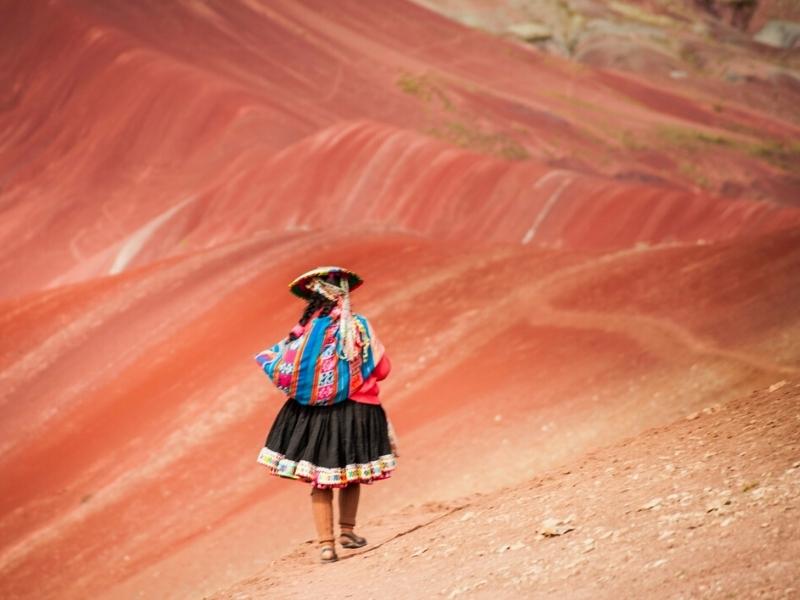
Mostly of our hikes in the mountains in Peru and Cusco like the classic Inca Trail to Machu Picchu, Ausangate Trek, Lares Trek, Ancascocha Trek, Salkantay Trek , involves an average of walking hours of 7-8 hours per day, this timing includes stops for taking photos, lunch, breaks for recovery the energy, and the most important we adapt to your walking pace. This relaxed style of trip involves to know all the attractions in greater depth.
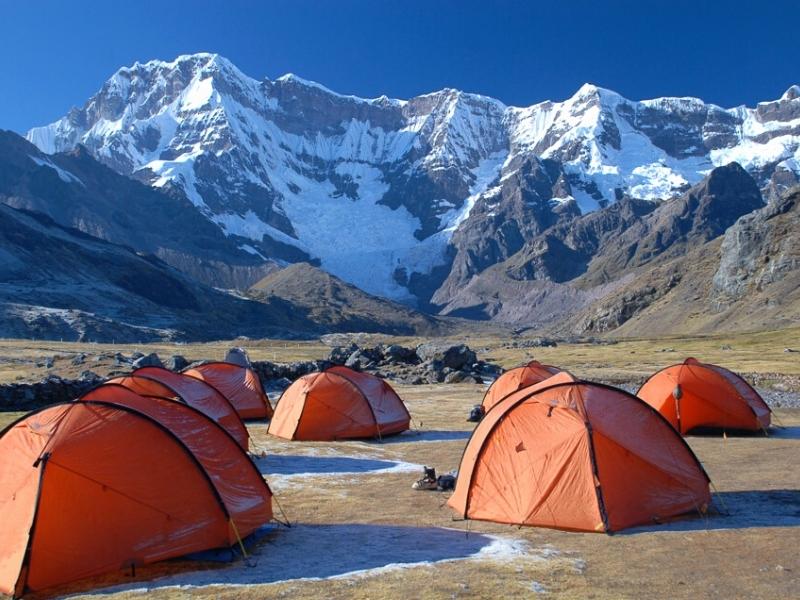
On nearly all our Walking trips, porters or mules will carry all the camping equimpent, so your main luggage will be transported for you. We recommend walk with a light rucksack, you will carry water, snacks, a camera, a small first aid kit and any extra clothing or sun protection. On more remote or challenging treks, additional guides are there to assist the leader tour guide and provide support to the group.
The acclimatization period is very important for our travelers to enjoy the experience. We suggest a minimum of 3 or 4 days of the previous stay in Cusco city, the Sacred Valley of the Incas or Machu Picchu. We recommend you check the acclimation programs we have prepared for you on our website.
The average height of our camps in the trekking circuits is 3,500 masl. In fact, one of the circuits where you sleep at the highest altitude is the Ausangate Trek, where you will have days to set up the tents at a height of 4,300 meters. Remember that Peru has snowy peaks that reach up to 6,700 masl.
From 3,000 meters above sea level, the symptoms of “altitude sickness” vary according to each person, and may even not occur. However, among the most common are a headache, dizziness, nausea, loss of appetite and insomnia. Therefore, upon arriving in the city of Cusco, located at 3,400 meters above sea level, we recommend our travelers to take a good rest, drink plenty of water, eat light meals and take slower walking. Also, it is necessary to avoid alcoholic beverages and cigarettes. The symptoms can be alleviated with high mountain medicines such as DIAMOX or similar products, but we suggest you consult with your doctor before the trip.
While on the trail, hikers will need to carry a daypack (camera equipment, water bottle, extra layers, rain gear, and other accessories you might need on the trail.) Horses and llamas will carry your duffle bag to the next camping site.
The company makes the greatest efforts to provide a safe and unforgettable experience, for this reason, the trekking guides are constantly communicated with the central office through satellite phones, ensuring the welfare of each passenger. Our guides are trained in rescue techniques and first aid in emergency outdoor, these courses are developed annually and have the standards of the wilderness first respond. At all times we have oxygen and first aid equipment. In case of any eventuality a medical director will answer our questions 24 hours a day. In addition to the animals who carry the luggage we have horses to help walkers tired or eager to ride. We recommend getting a travel insurance.

Every Andean Great Treks holiday has been thoughtfully planned and crafted by our specialists. They draw on their own extensive travel experience and the guidance and expertise of our local partners to create superb holidays. Our specialists are committed to making every aspect smooth and enjoyable; they genuinely want to ensure that the holidays they create leave you with wonderful lasting memories.
Every Andean Great Treks traveller is accompanied by an experienced tour guide, you will be immersed in Historic cities, ancient ruins and unfamiliar landscapes are all brought to life by our carefully selected local guides. They want to share their expertise and help you make your own discoveries too; their sole mission is to ensure you enjoy every moment.
Giving you the freedom to make your holiday even more memorable. We know how much our customers look forward to their holiday and we pride ourselves on the choice and flexibility that we offer to enhance every aspect of your experience. Whether it’s getting to the airport, upgrading your room or booking an additional excursion, we can help.

Our guides are the stars of the show; it is their unrivalled knowledge, passion and expertise that will transform your tour experience from good to truly extraordinary!
Because the have grown up in the area and know it like the back of their hand, so they can help you experience whichever aspects most interest you. They’re passionate about sharing their corner of the world with you, and as you explore together, they’ll open your eyes to the intricate details, provide background to enhance your understanding of what you’re seeing, and share stories that will bring everything to life.
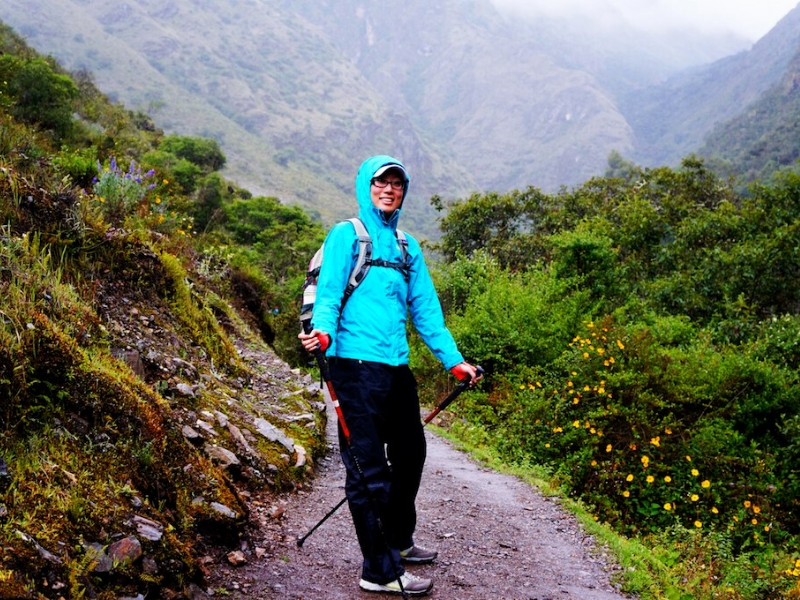
“Your inspiration for a trip can be a single word or a highly evolved outline, but it’s the conversations we have that help us understand the experience you’re looking for. Meanwhile, I’m looking back on the time I spent at the destination.
‘The great thing about working with a specialist at Andean Great Treks is how they take your complete jumble of ideas and turn them into something absolutely spectacular.’
As you begin to share your ideas with your specialist, it will connect them immediately back to a time in their own travels. Conjuring a picture of the rest time they made that same discovery, reminding them how it felt.
Your specialist understands that, when the journey is right, it has the power to excite your emotions in the most profound ways after all, that was the effect on them.
They carry a treasure box of moments, captured over many journeys, into every suggestion they’ll share with you, as they ask you how you want to feel on your trip.

EXPERIENCES THAT CALL TO YOU
It’s what you do in a destination that helps bring it to life. It’s why we strive to choose experiences that help you connect to a place, absorbing a little of its complex character. Wherever your passions lie, we’ll recommend experiences that speak to you, and we’ll recommend the guide or local expert who’s most qualified to help you explore. Packing your holiday full of special experiences means some early starts and long days, but you can be sure that you’ll return home with many incredible memories! Read our Tours and check the Physical Ratings to see if the pace and activity levels are right for you.

STAYS WITH DIFFERENCE
We know that where you stay is a cherished part of your travels. So, we go to great lengths to find places to stay that exceed expectations, or go above and beyond the ordinary, whether in their character, hospitality, or location. Over the years, we’ve discovered the very best properties, trying and testing them, so we can choose the right one for you. We’ve nourished long-standing relationships with these establishments and the people who founded them, and we’ve stayed there many times often, we’ll even know which rooms have the best views (and reserve them for you).

Our style of travel — authentic, thoughtful, and focused on building meaningful connections to the people and places you visit — is inherently respectful and considerate of the destinations we love. We design each aspect of your trip exactly as you want it, which includes its sustainability. That might mean choosing a train journey instead of a flight, staying at eco-friendly wildlife lodges, or opting for experiences that give back to the communities you’re visiting. The choice is yours.
Responsible travel has always been at the heart of what we do. First and foremost, because it gives you the best experience, but, also because it helps to preserve the communities and landscapes you visit. This isn’t new for us we collaborated with local communities and outside experts so we can grow to be better ambassadors.
The most authentic and interesting experiences often directly benefit the local people. We prefer to buy local products that are produced in the organic farms of the Sacred Valley, we also have alliances with local artisan organizations who provide us with souvenir items for our clients, your money directly benefits the local economy.
Our style of travel — authentic, thoughtful, and focused on building meaningful connections to the people and places you visit — is inherently respectful and considerate of the destinations we love. We design each aspect of your trip exactly as you want it, which includes its sustainability. That might mean choosing a train journey instead of a flight, staying at eco-friendly wildlife lodges, or opting for experiences that give back to the communities you’re visiting. The choice is yours.
Responsible travel has always been at the heart of what we do. First and foremost, because it gives you the best experience, but, also because it helps to preserve the communities and landscapes you visit. This isn’t new for us we collaborated with local communities and outside experts so we can grow to be better ambassadors.
The most authentic and interesting experiences often directly benefit the local people. We prefer to buy local products that are produced in the organic farms of the Sacred Valley, we also have alliances with local artisan organizations who provide us with souvenir items for our clients, your money directly benefits the local economy.
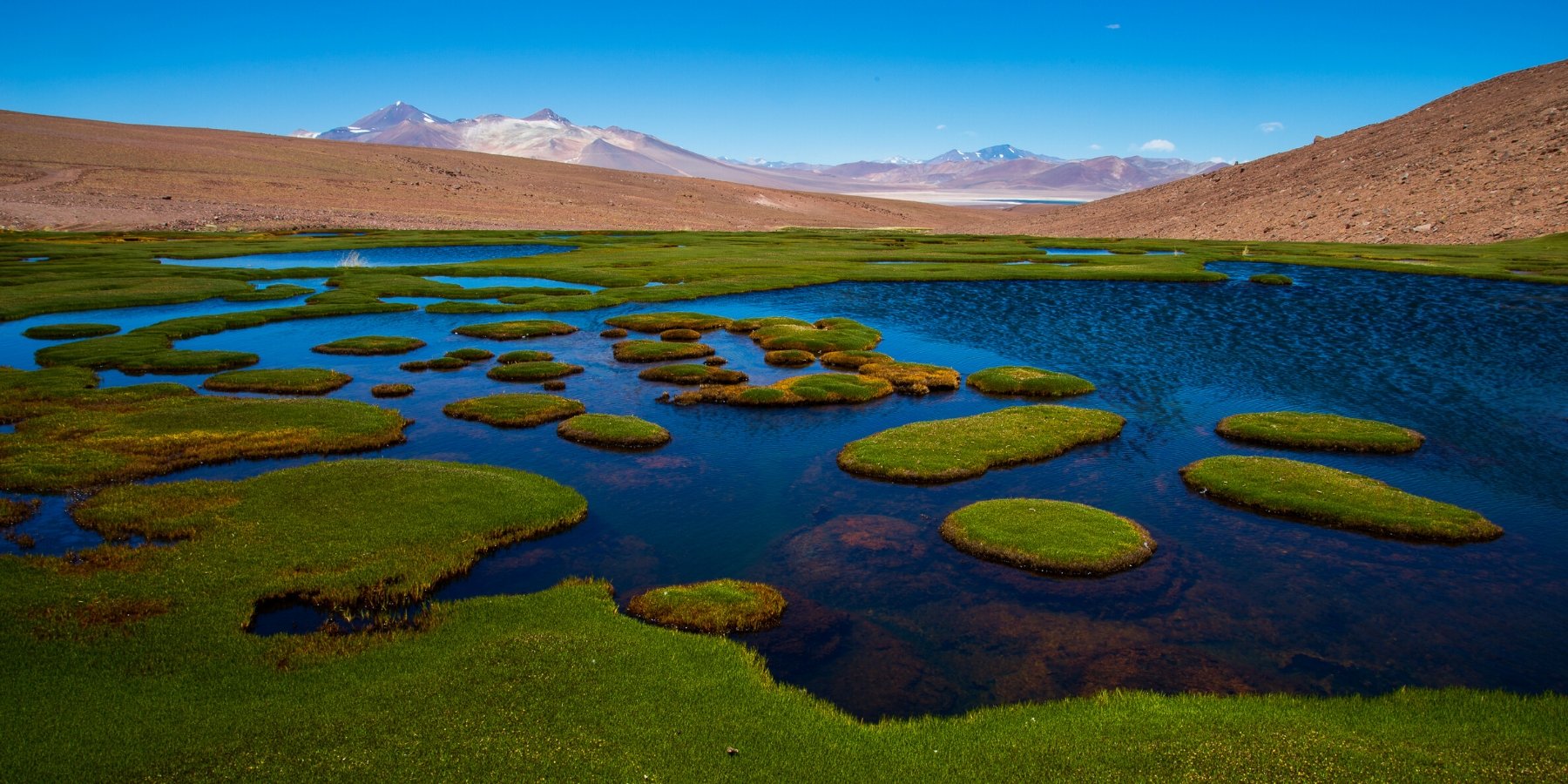
‘There’s a saying: we don’t inherit the Earth from our ancestors, we borrow it from our children. When we show you our country, this philosophy guides everything we do. It’s our responsibility to preserve the environment and wildlife, and support communities. That means using slower modes of transport, like cycling, employing local people, and working with communities who’ll benefit directly from your visit. This also gives you the best, most authentic impression of the places we want to share with you.
We prefer to buy local products in ecological bags, to avoid the use of plastic bags, likewise we teach the use of soaps and ecological products in each tour that we organize. We also work on reforestation projects with local communities who take care of landscape resources such as communal reserves, national parks.
‘There’s a saying: we don’t inherit the Earth from our ancestors, we borrow it from our children. When we show you our country, this philosophy guides everything we do. It’s our responsibility to preserve the environment and wildlife, and support communities. That means using slower modes of transport, like cycling, employing local people, and working with communities who’ll benefit directly from your visit. This also gives you the best, most authentic impression of the places we want to share with you.
We prefer to buy local products in ecological bags, to avoid the use of plastic bags, likewise we teach the use of soaps and ecological products in each tour that we organize. We also work on reforestation projects with local communities who take care of landscape resources such as communal reserves, national parks.
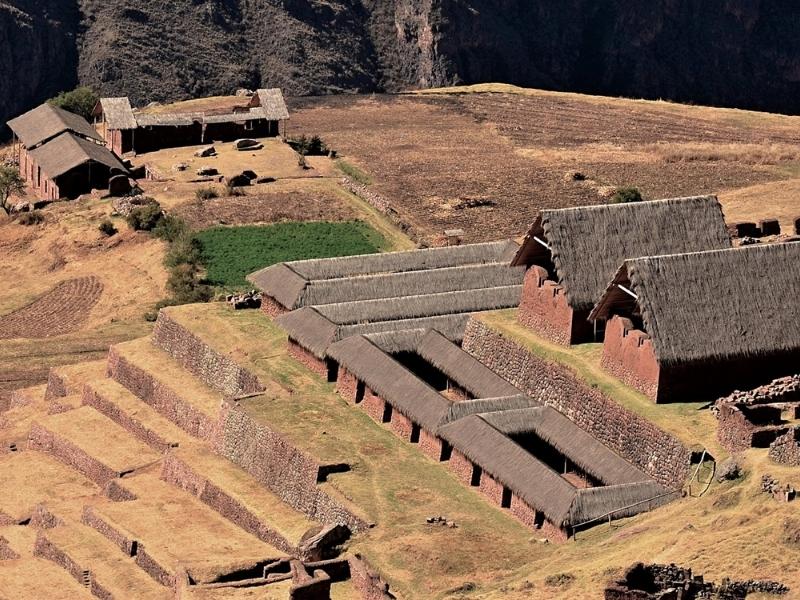
The walk from Huchuy Qosqo to Machu Picchu, is one of the shortest in Cusco, but full of unique landscapes, and towns with ancient traditions. This circuit is recommended for tourists who want to know little-visited places, with a camp from where you can see a unique sunrise of the Sacred Valley of the Incas.

Salkantay Trek is the second best hiking option to Machu Picchu, offering a totally full of natural scenes , passing the majestic Salkantay snow mountain.
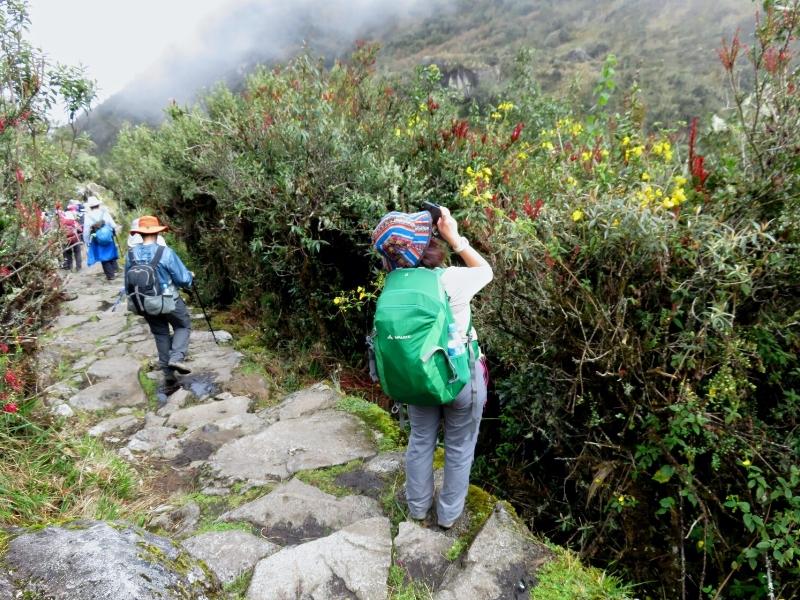
Ancascocha Trek & Classic Inca Trail to Machu Picchu will take you through beautiful landscapes and snowy mountains surrounded by colorful lakes and waterfalls. You will discover ancient inca ruins, local flora and fauna of Machu Picchu.